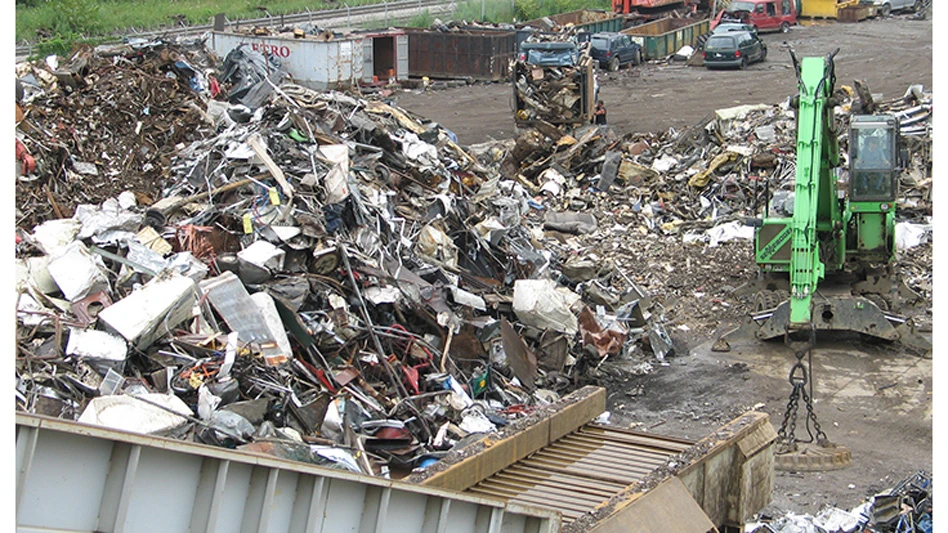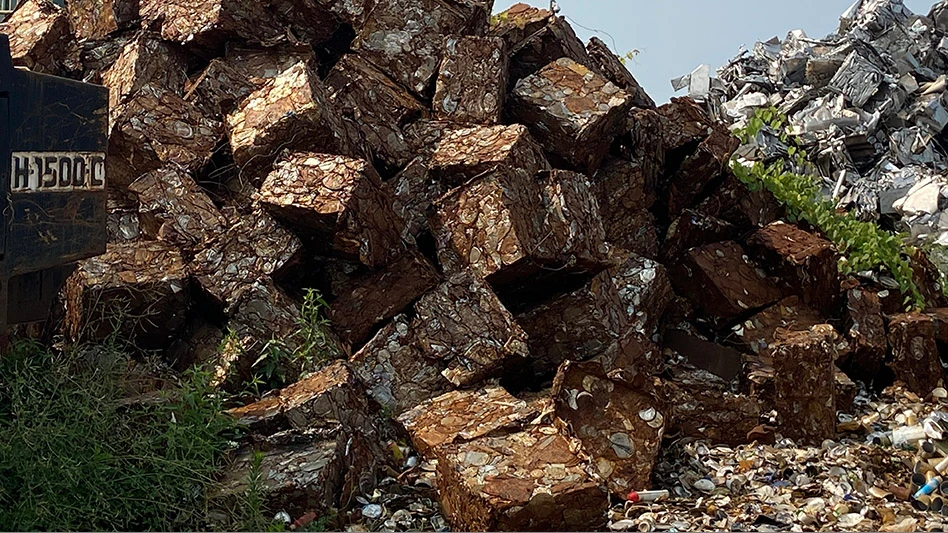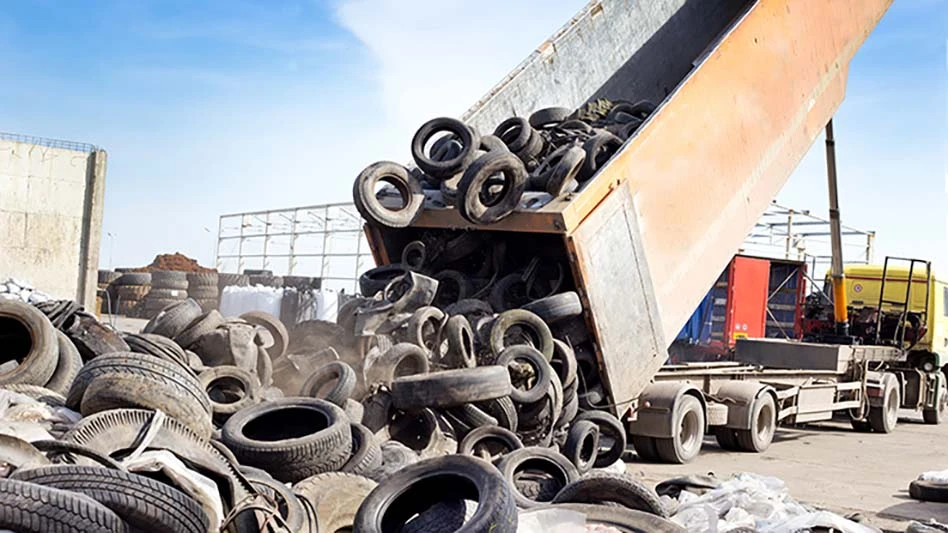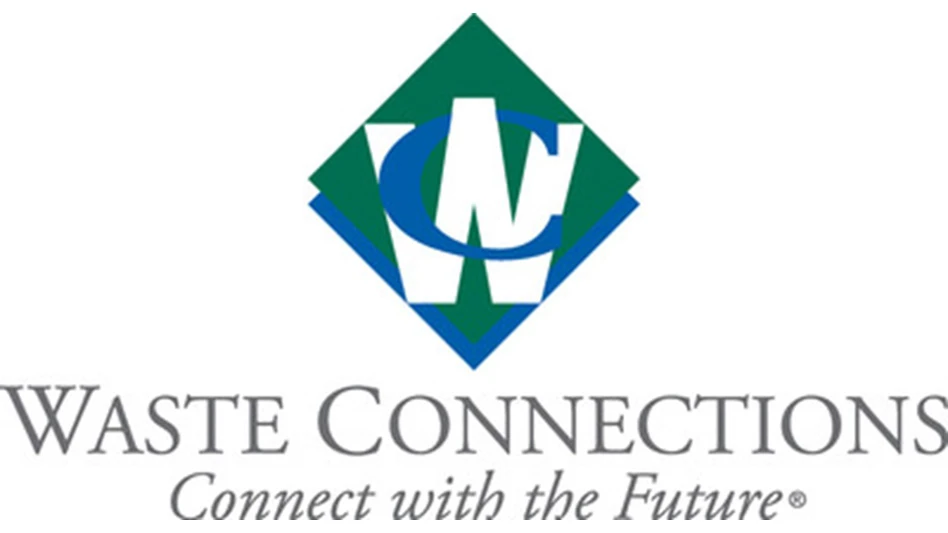
Recycling Today archives
The summer market for ferrous scrap has remained in the doldrums through mid-August, with only rare glimpses of a pricing rebound so far this year.
As measured by mill transaction pricing collected by the Raw Material Data Aggregation Service (RMDAS) of Pittsburgh-based MSA Inc. and by data gathered by Davis Index, July prices for benchmark grades were stable in the best cases and managed to drop further in others.
Sellers of ferrous scrap and those holding inventory have not received better news in August.
In mid-August, Davis Index reports prices for benchmark grades, including No. 1 busheling, shredded scrap and heavy melting steel (HMS), as largely unchanged in terms of domestic mill buying.
The lack of a rebound leaves the No. 1 HMS grade around $320 per gross ton to mills in the U.S., while shredded scrap trades at $380 or below, and even prime scrap remains below $400 per ton.
The export market for HMS grades in August is faring little better, with West Coast shippers witnessing a $5 per metric ton drop in value and those on the East Coast watching prices drop by about $10 per metric ton compared with July.
The impact of China’s steel mills churning out products the country's own builders and manufacturers cannot consume is being felt in the Turkish export market this year, according to Davis Index.
“Most Turkish mills are uninterested in ferrous cargo purchases due to falling prices for imported billet from China,” Davis Index says, adding that the end market for Turkish semifinished and finished steel is “sluggish” and does not have improved sales prospects in sight.
On the supply side, two different processors who help manage multilocation scrap companies describe the U.S. supply and demand situation as in balance. Both also say they are unconvinced prices will rise anytime soon.
“Going forward, there seems to be a bearish tone to the market as there are several planned maintenance outages across a number of consumers in September and October,” a processor with operations in the Midwest says. “Future steel demand seems questionable, and the international prices are sliding."
A processor with yards in the western U.S. says the market is balanced, but not in a favorable fashion.
“Supply is not plentiful; it has steadily reduced as seen in total quantities sold and shipped,” he says. “They are both down.
“The difference is that demand is also down. In that context, supply is in balance. If you look at most scrap yards, there is not a surplus of scrap inventories.”
Although neither export pricing nor demand can be considered booming, the western processor says sellers and shippers near ports continue to benefit from the purchases that are made.
“Export has been a godsend for scrap dealers as the prices have held steady for most of the summer,” he says. “That has prevented U.S. prices from falling further in a market of weak demand, but limited supply.”
He says West Coast companies that can access bulk cargo export markets would rather load a boat for export than railcars for domestic sales.
"The export price has supported those bulk export sales versus the freight cost to ship it inland to domestic consumers," he says.
Among the things preventing export prices from rising, as noted by Davis Index, is the overcapacity situation in China, where mills continue to pump out steel despite that nation’s construction sector now acting as a shadow of its former self.
That circumstance was decried in early August in comments accompanying the financial results of global steel producer ArcelorMittal.
“China’s excess production relative to demand is resulting in very low domestic steel spreads and aggressive exports; steel prices in both Europe and the United States are below the marginal cost,” the company says.
The topic of price discovery was on the mind of a steelmaking CEO Lourenco Goncalves of Cleveland-Cliffs earlier this year.
In late January comments accompanying financial results, the CEO remarked, “Going forward, and assuming a fair scrap marketplace—free from artificial, provoked and hard-to-explain moves—with scrap demand growing and scrap supply shrinking, there is no good reason for scrap prices to go down.”
Additional details as to what Cliffs was observing were not forthcoming. In August, however, a move by the Ohio electric arc furnace (EAF) mill operated by Australia-based steelmaker BlueScope brought the topic of price discovery back into play.
The scrap processor with multiple locations in the Midwest says the mill, which for several years had been issuing an early monthly announcement declaring what it intended to pay for different grades of scrap, issued no such notice in early August.
“They have seemingly gone away from a blanket price announcement and let their supply base know that they will no longer be distributing blanket price direction, but rather contacting their supply base to discuss prices monthly,” says the processor.
Continues the scrap executive on BlueScope in Ohio, “They were for some time a sort of market direction indicator, and typically the first large consumer into the domestic market with a formal price direction announcement. It will be interesting to see how markets develop in that region without that.”
Earlier this decade, BlueScope joined Nucor Corp., Steel Dynamics Inc., Gerdau, Commercial Metals Co., Evraz and Cleveland-Cliffs as steel producers who own scrap yard networks. Radius Recycling also owns one EAF mill, and this summer Wisconsin-based Charter Steel bought two Ohio scrap yards.
The vertical reach of steel producers into their supply chains traces back to as far as steel had been produced on a mass scale, as illustrated by the iron mining and processing history of U.S. Steel and the collection of companies that became ArcleorMittal.
When or if that reach has begun to affect what has long been considered by many observers as one of the economy’s truly supply-and-demand-based economic indicators remains an open question.
Latest from Recycling Today
- Lautenbach Recycling names business development manager
- Sebright Products partners with German waste management equipment company
- WasteExpo transitions to biennial format for enhanced experiences
- Study highlights progress, challenges in meeting PCR goals for packaging
- Washington legislature passes EPR bill
- PureCycle makes progress on use of PureFive resin in film trials
- New copper alloy achieves unprecedented high-temperature performance
- Gränges boosts profits and sales volume in Q1 2025





